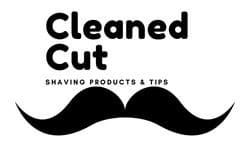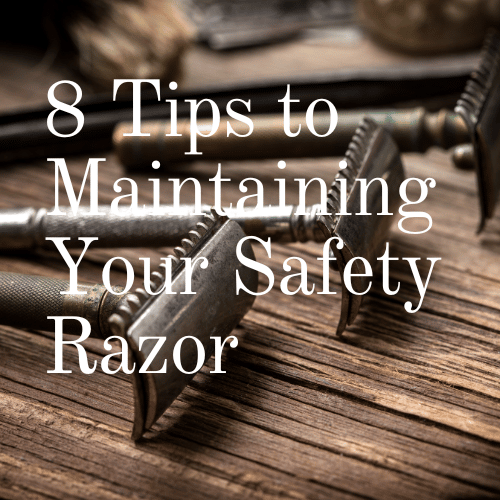When you spend time shaving your face each day, it’s important to keep the razor clean consistently to avoid irritations and infections that can develop. Using a safety razor requires cleaning the parts to ensure it’s safe to use during the week. There are a few important tips to follow to maintain your safety razor to ensure it lasts longer and delivers a closer shave.
Regular Cleaning
It’s important to get into the habit of cleaning your razor after you use it to ensure hair, dead skin, and bacteria are removed. Start by rinsing the blade off in warm or hot water, which will kill germs and remove any gunk or grime that has accumulated. Use a clean and dry cloth to wipe it down and remove excess moisture to prevent water from sitting on the metal parts, which can quickly lead to rust.
Weekly and Monthly Cleaning
The mineral content of the water that you use on your razor each day influences how often it should be cleaned as you continue to use it. If you have hard water on your property, the safety razor requires more frequent cleaning due to the excess minerals that accumulate on it. If you have soft water on your property, you can get away with cleaning the razor once each month. If you notice a powdery, white residue forming on the parts, it’s time to clean it more frequently.
Cleaning the razor every week or month requires using the right products to kill germs and bacteria that start to accumulate with each use. You’ll need anti-bacterial soap, water, a soft-bristled toothbrush, and a soft rag. It’s important to avoid using a paper towel, which breaks apart easily and can get clogged in the parts of the razor. Paper towels are also known to be abrasive and can lead to premature wear and tear on the blade.
You can start the safety razor cleaning process by disassembling the parts for a thorough cleaning that is more efficient. Use soapy, warm water for your rag before wiping down the different parts. The soft-bristled toothbrush will come in handy for cleaning the small crevices and areas that are hard to reach. You can consider using an old child’s toothbrush to reach the smaller parts and have a high level of precision. A toothpick or a cotton swab will also work well for removing dirt and grime where the toothbrush can’t reach. Avoid applying too much pressure to avoid damaging the threads on the top of your razor.
Deep Cleaning the Razor
Many people forget to periodically deep clean their safety razor, which can affect how well it works and can make it difficult to get a closer shave. If you want to deep clean a safety razor, create a mixture of water and vinegar, which will break down the accumulation of scum and minerals. The vinegar needs to be diluted to prevent it from causing damage to the parts of your razor due to the acid it contains. If a lot of the grime is thick and hard to remove, add a teaspoon of baking soda to the mixture. These household ingredients are safe to use and won’t cause any damage to your razor.
Drop the razor into the soapy mixture and allow the parts to soak for at least ten minutes to ensure the dirt slowly starts to dissolve. Take the toothbrush and scrub the excess dirt to get a good cleaning.
Once all of the dirt and grime is removed, you can rinse off the parts with hot water and place everything on a clean towel to allow it to dry. Use a small washcloth to grip the blade when inserting it back into the razor. You can also use thick gloves to avoid cuts or nicks on your skin.
If you own a two or three-piece razor, take a look at the threaded post that is present on the top cap of the razor. Use oil or grease to lubricate the parts. Teflon tape is also effective to wrap around the thread to keep it in place. As you learn how to clean a safety razor, it’s also important to clean in-between the threads with soap and a soft-bristled toothbrush for a thorough cleaning that extends the lifespan of the parts.
Use an Ultrasonic Jewelry Cleaner
An ultrasonic jewelry cleaner is also effective to use when you need to perform safety razor cleaning. It’s important to find a product that has at least 60 watts to ensure you get a more thorough cleaning. Avoid using hot water and use a specific type of fluid that is designed to be used in this type of device to avoid damage to the parts, which can affect its operation. You can also use lukewarm water in the machine. Once the cycle is complete, you can wipe down the parts of the razor with a clean towel to help it remain in great shape for continued use.
Avoid Leaving the Razor in the Shower
Many people make the mistake of leaving their razor in the shower or bathtub after they use it. Unfortunately, this can quickly cause rust to form due to water that sits on the parts for too long. Not only is the rust dangerous to put on your skin, but it can also make the razor less effective.
It’s important to dry it off after each use and store it in a dry place where there isn’t a lot of moisture in the air.
Removing Rust from Your Safety Razor
If you make the mistake of allowing moisture to sit on the blade of your safety razor when it’s not in use, you’ll likely start to notice rust that is present after a few weeks. It’s important to immediately remove any rust that has formed to ensure you can continue to use the razor instead of having to replace it. Warm water and Castile soap are effective for removing rust while using an old soft-bristled toothbrush. Spend a few minutes and have patience with the process.
If this method doesn’t work, you can also try soaking the razor in a mixture of vinegar and water again, just as you would do when deep cleaning the pieces. Use two to three tablespoons of baking soda, which will cause the water to become fizzy as it begins to attack the rust and break it down.
All of the rust needs to be completely removed from the razor or it will come back in time when exposed to moisture.
Assembling Your Safety Razor
One of the main benefits of disassembling the different parts of your razor is getting a deeper clean and removing grime in small crevices where bacteria can grow. Once you learn how to put a blade in a safety razor, it’ll be quicker and easier to clean your blade each week or month, depending on how often it’s in use. You can also feel more confident maintaining the pieces after you learn how to clean a safety razor with the right materials and products.
Use Performance-Enhancing Oil
It’s also important to use performance-enhancing oil on the blade, which is one of the most important ways to maintain it. The specialized oil is effective in acting as a barrier to prevent corrosive oxidation. You can also resort to using rubbing alcohol to kill germs to ensure you can achieve a close shave without irritation or infections as the blade has contact with your skin.
Proper safety razor cleaning also requires only using gentle cleansers that aren’t too abrasive. Using abrasive cleaners can cause damage and wear to the chrome plating while also causing damage to the finish on the stainless steel parts.
Key Takeaways
In conclusion, maintaining your safety razor through regular and thorough cleaning is essential for ensuring a close, comfortable shave while extending the life of your razor. From the daily rinses in warm water to the occasional deep clean with vinegar and baking soda, each step plays a crucial role in preserving the razor’s functionality and preventing irritations and infections. Utilizing tools like a soft-bristled toothbrush and an ultrasonic jewelry cleaner can make the cleaning process more efficient and effective, ensuring that every part of the razor is free from hair, dead skin, and bacteria.
Moreover, proper storage and care, including drying the razor after each use and avoiding leaving it in moist environments like the shower, are vital practices to prevent rust and corrosion. For those unfortunate instances when rust does appear, knowing how to remove it safely ensures that your safety razor remains in top condition for future use.
By incorporating performance-enhancing oil and avoiding abrasive cleaners, you can further protect your razor and ensure it remains a reliable tool in your grooming kit. Learning how to clean and maintain a safety razor not only enhances your shaving experience but also represents a commitment to personal care and hygiene. By following these tips and dedicating time to your razor’s upkeep, you can enjoy a superior shave every time while safeguarding your skin’s health.



